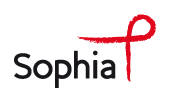S Wielding and A Scott Chalmers Centre, NHS Lothian, Edinburgh, UK
Background: 229 women attend Chalmers Centre (a city-centre integrated sexual health centre) for their HIV care and treatment. Local third sector agencies provide peer support but anecdotally it is not well utilised and some demographic groups are under-represented. The study aims to gain better understanding of the background social characteristics of these women, to ascertain what issues they are affected by, and to better identify additional support required and how this should be facilitated. Methods: An anonymous self-completion questionnaire was developed and all women attending HIV clinics between July and November 2015 were given the opportunity to participate. Additional data were accessed from the National Sexual Health (NaSH) database on cohort size and gender based violence (GBV) enquiries.
Results: 44 women living with HIV (WLWH) completed the questionnaire representing 53.7% of women attending the service during the study period. 25% are unemployed. 84.6% had a combined household income of <£30,000 per annum. 16.7% do not know anyone else, and 59.5% know only one other person, who is living with HIV. 32.6% would like to meet other/more WLWH, 25.5% were unsure if they did. Of those who would, 42.9% would prefer a one-to-one setting, 42.9% would prefer a group setting. 64.3% would prefer to meet off NHS premises. 26.8% were interested in discussion groups for women, 31.7% were unsure. The most popular suggestions for discussion group topics were stress/anxiety (9), HIV disclosure (8), diet and nutrition (7), and pregnancy and childbirth (6). 26.8% were interested in attending a “womens clinic” staffed by female staff, the same number were unsure if they would utilise this service or not. 50% of women had, at some point experienced GBV. Of the 13.5% currently experiencing GBV, 4 have children living with them. From NaSH records only 15.7% of the cohort had ever been asked about GBV.
Conclusion: Respondents were demographically representative of our whole cohort. 75% are in employment but it appears that the majority of these women are likely to be earning lower than the national average income. To improve holistic support for these women and facilitate peer support we need to be flexible in our approach. GBV appears to be disproportionately affecting WLWH in Lothian and as a team we are failing to routinely enquire about it. Robust referral/signposting pathways should be developed for women after GBV disclosure.

